Is Swansea's troubled rail electrification journey at an end?
- Published

The electrification of the line was due to extend to Swansea but will now stop at Cardiff
Plans to electrify the railway passed Cardiff to Swansea have been scrapped by the UK government again.
Back in July 2012 the Department for Transport announced plans for the electrification of the line as part of a £16bn package of rail improvements.
So what has changed to lead to another halting of the work on the tracks?
And what does it mean for passengers coming to and from Wales, and for the people of Swansea?
What is the background?
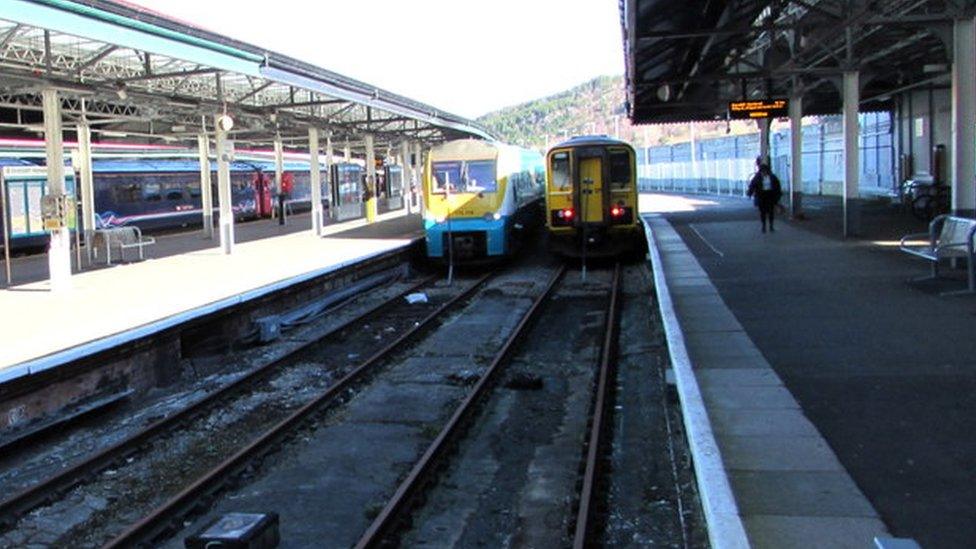
Since the DfT first announced plans, the proposals have been raised and dropped several times.
In 2009, the then-Labour UK government included the works as part of an estimated £1bn upgrade of the Great Western Main Line, to be completed by 2017.
But the plans were binned in 2011 by the Conservatives, who said there was no "viable business case" for extending the electrification from Cardiff, as it would not lead to more frequent trains.
In July 2012, external, the DfT made a U-turn and the plans were put back on the table as part of a planned rail upgrade.
Ahead of the general election in 2015, the Welsh Conservatives reaffirmed its pledge to "finish the job" of electrifying the route in their manifesto.
But the plans were scrapped again on Wednesday by Conservative transport secretary Chris Grayling.
So what has changed?
Sir Peter Hendy, chairman of Network Rail was speaking on a visit to a rail contractor in Cardiff
Dr Andrew Potter, chairman of the Chartered Institute of Logistics and Transport Cymru, said not knowing the potential cost of the work could have been the project's big sticking point.
He said it was unclear what workmen would have encountered on the route.
"When the line east of Cardiff was electrified, there was not always records of where cables are buried which slows the process," he said.
"This is a legacy of a 100-year-old railway and there are probably surprises there (between Cardiff and Swansea).
"If you come across a signalling power cable, you have to work out if it's live or one that has been left behind and replaced."
While such issues would create headaches, he said he believed the biggest problem to overcome would be the number of bridges over the line.
He said they would either need to be raised to provide clearance for the wires above the trains or the track would need to be lowered.
"With the terrain in Wales, there are bound to be a number of bridges," he added.
What about the cost?

Since 2013, the cost of electrifying the track between Swansea and Cardiff has spiralled from an estimated £295m to £433 in August 2016, according to an audit office report, external.
This is a 47% projected increase in just three years.
But leading Welsh transport expert Prof Stuart Cole believes the cost today could be be far greater due to issues with upgrading the track.
He said. "In the initial stages the evaluation of costs and benefits were a desk exercise…
"As that got more realistic and as the engineers started to walk the tracks to identify what bridges needed to be either removed, changed, heightened… those costs started to mount up [and] it increased from something like £300m to what is now £700m to 800m and I think that's probably been the primary determinant in this decision by the Department for Transport."
What does it mean for passengers?

New hybrid electric-diesel trains will be in service between London and Swansea from the autumn
Network Rail is working to deliver electrification between London and Cardiff by December 2018, shaving 14 minutes off a typical journey.
But Prof Cole said that there would be no change in journey time due to the muting of the plans - and passengers would not need to get off and change at Cardiff.
The UK government has promised the latest hybrid electric-diesel trains will run to Swansea from the autumn, with each train accommodating an extra 159 seats.
They will run on electricity between London and Swindon - speeding up journey times between the two stations - but will switch to diesel for the rest of the journey.
Leader of the House of Commons MP Andrea Leadsom said while the electrification was not going ahead, ministers were exploring a "different approach that is less disruptive to passengers and to communities".
What does it mean for Swansea?
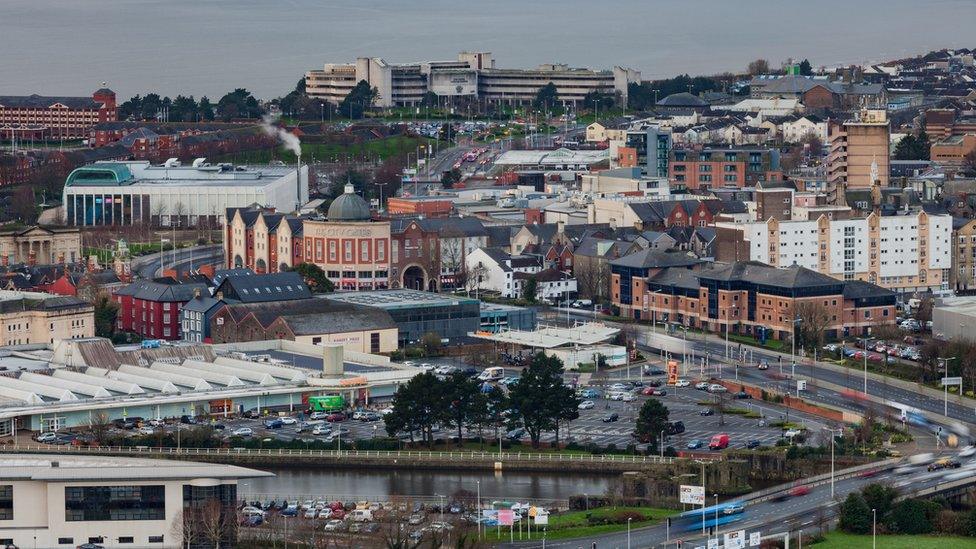
Swansea was one of 11 towns and cities to bid for the City of Culture 2021 title
There are fears that the lack of electrification of the route in and out of Swansea will be damaging for the economy and could stop business investment.
Prof Cole warned the city would be left behind, "without the kind of modern railway which cities of its size throughout Western Europe have had for several years".
He said the lack of investment could put off large companies such as Siemens from investing in the city.
What does it mean for other rail investments?

Businesses say the electrification of the north Wales coast main line would bring 70,000 new jobs in the next 20 years
The decision to put a halt to works in Swansea could have an impact on rail improvement hopes in other parts of Wales.
In north Wales, business leaders and the Welsh Government have put in a bid for £800m of DfT funding for the electrification of the coast main line within the 2019-2024 funding period.
But these plans have been described in the past as "poor value for money" by Network Rail and look set to be turned down unless the route can be made more profitable.
- Published20 July 2017
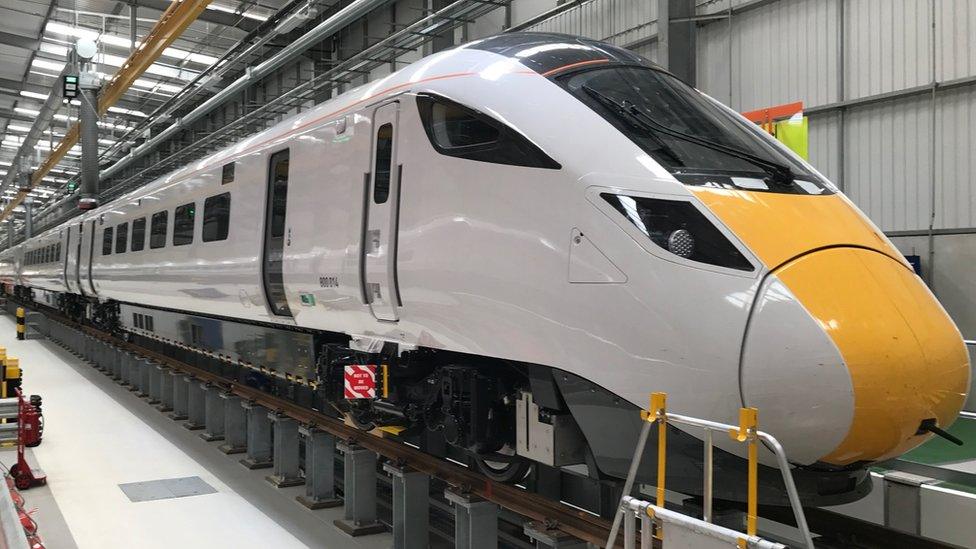
- Published18 July 2017
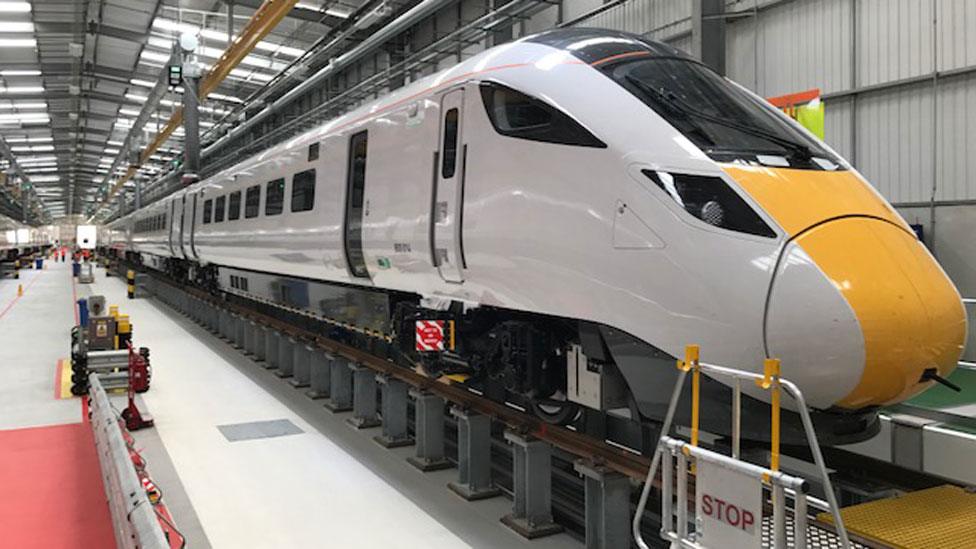
- Published14 July 2017
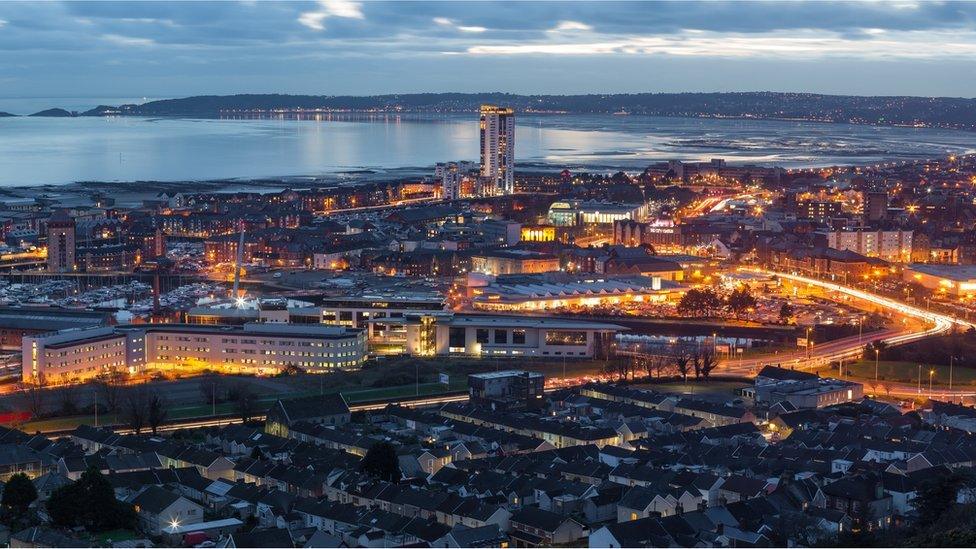
- Published30 November 2016
